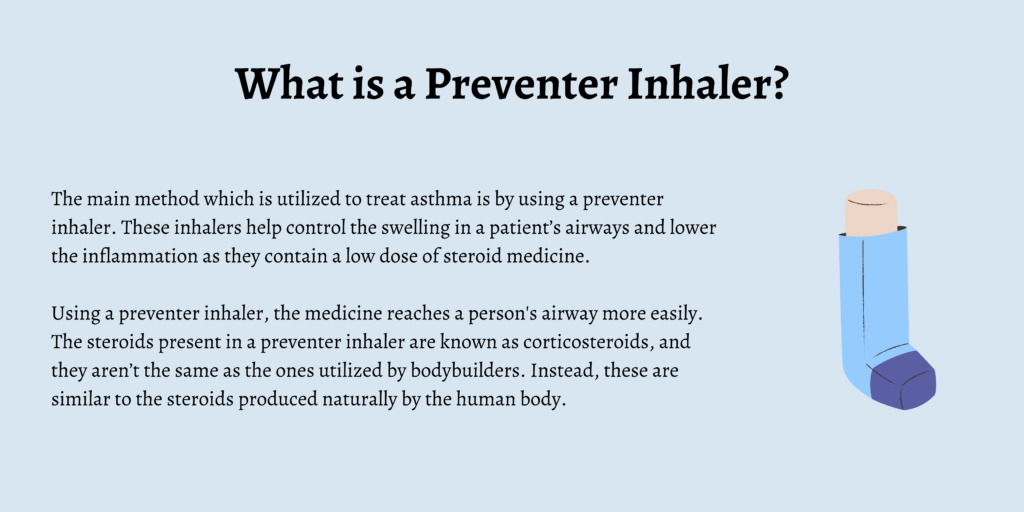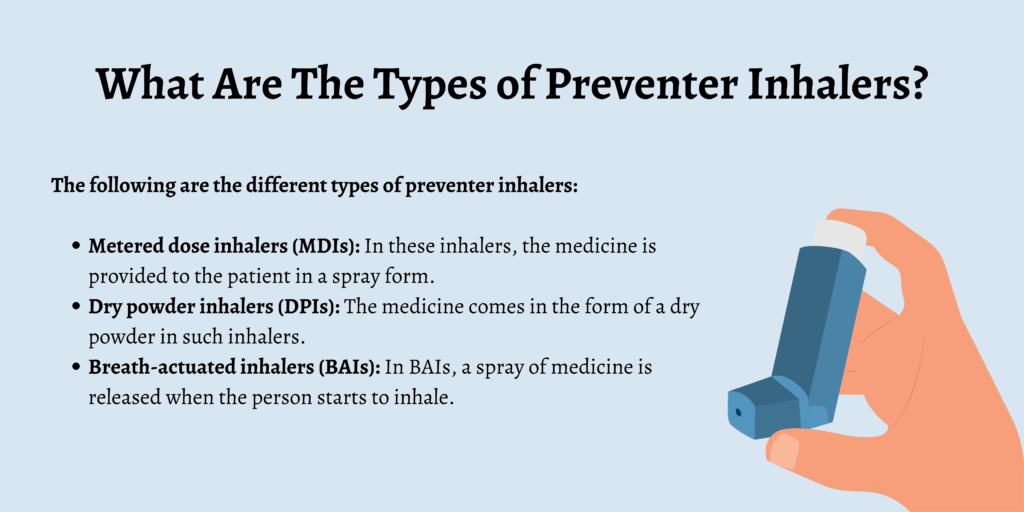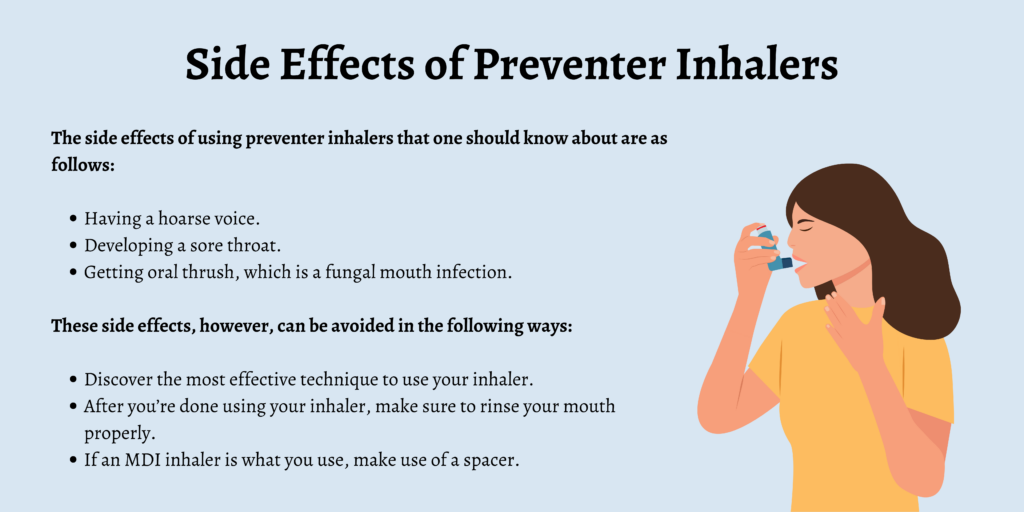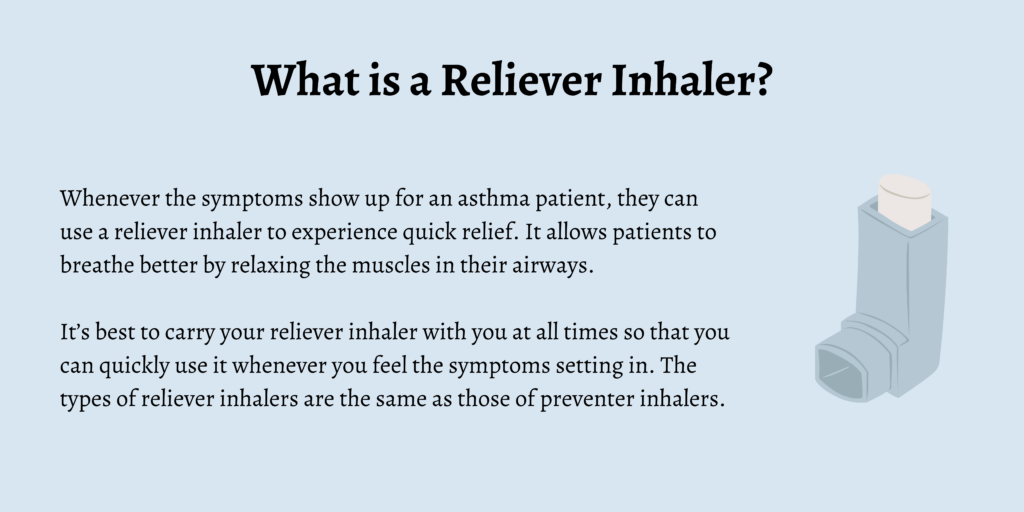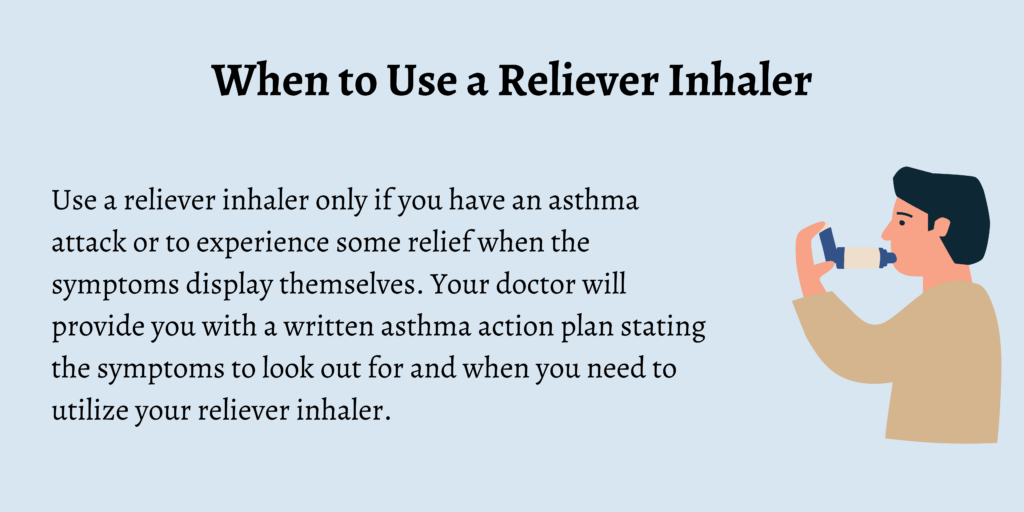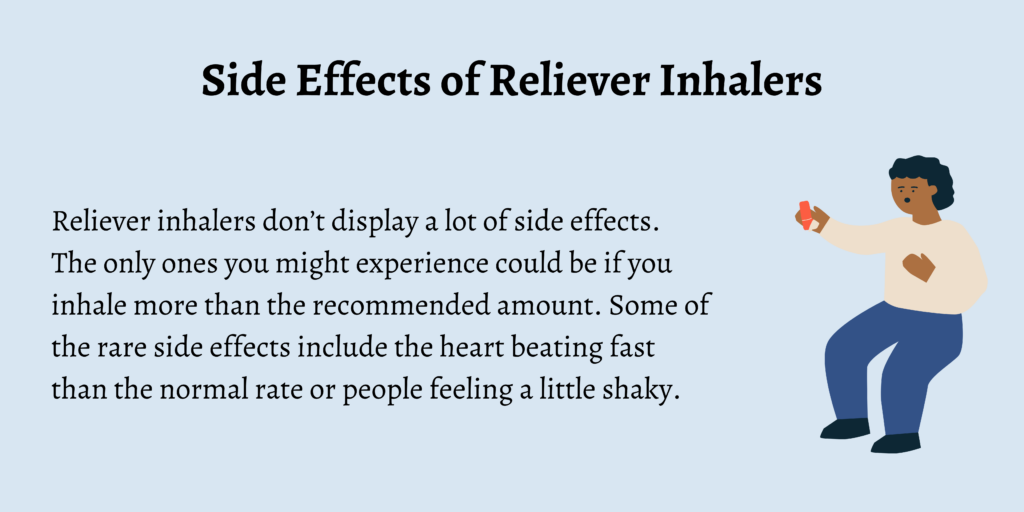The Difference Between a Reliever And Preventer Inhaler For Asthma
Asthma is a condition wherein a person’s airways become narrow, swell up, and end up producing extra mucus. This causes the patient to cough, thereby making it difficult for them to breathe and leading them to make a wheezing sound every time they breathe out.
Although asthma can’t be cured, one can bring its symptoms under control. Of the various types of medicines available to deal with asthma, the two popular kinds include preventers and relievers, both of which fall under the category of inhalers.
The most effective and common way to deliver someone’s asthma medicines to their lungs is through inhalers. There are multiple types of inhalers that function in various ways.
While some inhalers deliver just one medicine, others also deliver two medicines. In this article, we will be elaborating on preventer inhalers and reliever inhalers and providing you with the necessary information regarding them both.
What is a Preventer Inhaler?
The main method which is utilized to treat asthma is by using a preventer inhaler. These inhalers help control the swelling in a patient’s airways and lower the inflammation as they contain a low dose of steroid medicine.
Using a preventer inhaler, the medicine reaches a person’s airway more easily. The steroids present in a preventer inhaler are known as corticosteroids, and they aren’t the same as the ones utilized by bodybuilders. Instead, these are similar to the steroids produced naturally by the human body.
What Are The Types of Preventer Inhalers?
The following are the different types of preventer inhalers:
- Metered dose inhalers (MDIs): In these inhalers, the medicine is provided to the patient in a spray form.
- Dry powder inhalers (DPIs): The medicine comes in the form of a dry powder in such inhalers.
- Breath-actuated inhalers (BAIs): In BAIs, a spray of medicine is released when the person starts to inhale.
Ask your doctor about the inhaler that will best suit you. In case you face difficulties with your current inhaler, check and explore to find one that works better for you.
Benefits of Using a Preventer Inhaler
By stopping the inflammation and swelling that builds up in the airways, preventer inhalers help asthma patients from not reacting as severely to their asthma triggers. Listed below are some of the benefits of using a preventer inhaler:
- They make it easier to engage in exercise.
- They ensure that you don’t have to use your reliever inhaler as often.
- They allow you to get better sleep.
- They decrease your sensitivity toward your asthma triggers.
- They help you stay more active throughout the day.
When to Use a Preventer Inhaler
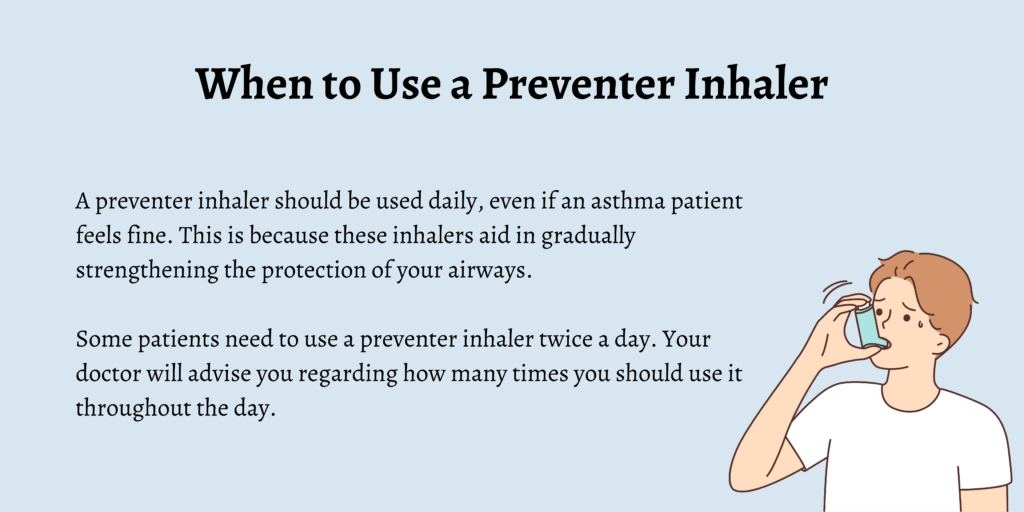
A preventer inhaler should be used daily, even if an asthma patient feels fine. This is because these inhalers aid in gradually strengthening the protection of your airways.
Some patients need to use a preventer inhaler twice a day. Your doctor will advise you regarding how many times you should use it throughout the day.
Side Effects of Preventer Inhalers
Much like any other medicine, using a preventer inhaler does come with certain side effects. However, the possibility of consuming a smaller dose than what is prescribed to you won’t pose a huge risk.
The side effects of using preventer inhalers that one should know about are as follows:
- Having a hoarse voice.
- Developing a sore throat.
- Getting oral thrush, which is a fungal mouth infection.
These side effects, however, can be avoided in the following ways:
- Discover the most effective technique to use your inhaler.
- After you’re done using your inhaler, make sure to rinse your mouth properly.
- If an MDI inhaler is what you use, make use of a spacer.
What to Remember While Using a Preventer Inhaler
Here is what you should remember about using a preventer inhaler:
- Develop a habit of using your preventer inhaler daily. Keep it somewhere nearby so you will be reminded daily to use it.
- Ensure to get a new prescription so you never run low on your preventer medicine. Certain devices also display how many doses are remaining for the patient, so remember to contact your doctor accordingly.
- In order to become a more environmentally conscious individual, carry your old inhalers to a pharmacy. This way, you can make sure that they get handled more safely.
What is a Reliever Inhaler?
Whenever the symptoms show up for an asthma patient, they can use a reliever inhaler to experience quick relief. It allows patients to breathe better by relaxing the muscles in their airways.
It’s best to carry your reliever inhaler with you at all times so that you can quickly use it whenever you feel the symptoms setting in. The types of reliever inhalers are the same as those of preventer inhalers.
When to Use a Reliever Inhaler
Use a reliever inhaler only if you have an asthma attack or to experience some relief when the symptoms display themselves. Your doctor will provide you with a written asthma action plan stating the symptoms to look out for and when you need to utilize your reliever inhaler.
There are many patients who feel that their asthma gets triggered due to exercise, and they are often advised to use their reliever inhaler before they begin a workout. This helps them prevent the symptoms from coming on.
If you believe that exercise acts as one of your asthma triggers, contact your doctor right away as they might want to look into upgrading your preventer treatment.
How to Get a Reliever Inhaler
One can get a reliever inhaler from their general practitioner. Any person who has suspected asthma or asthma will be prescribed a reliever inhaler. Before your reliever inhaler is about to get over, make sure to contact your doctor so you have a backup ready with you.
You can also contact your local pharmacy and arrange repeat prescriptions to make things much simpler for yourself.
Side Effects of Reliever Inhalers
Reliever inhalers don’t display a lot of side effects. The only ones you might experience could be if you inhale more than the recommended amount. Some of the rare side effects include the heart beating fast than the normal rate or people feeling a little shaky.
What to Remember While Using a Reliever Inhaler
Here are some tips to remember while using a reliever inhaler:
- Make sure you have easy access to your reliever inhaler. Keep your friends and family members aware of the location of your inhaler as well so that they can give it to you in cases of emergencies.
- Keep checking the expiry date of the medicine in your reliever inhaler. Replace the old inhaler with a new one once it expires.
- Carry your reliever inhaler with you no matter where you go. You can also ask your doctor to prescribe you an extra one that you can keep it in your car.
- Look up the storage instructions provided on the label of your inhaler to learn about the right temperature to store your reliever inhaler.
- Whenever your inhaler is not in use, make sure the cap is on so as to prevent small items from getting stuck in the inhaler’s mouthpiece.
Comparing Preventer Inhalers And Reliever Inhalers
Listed below is a table that sheds light on a couple of the differences between preventer inhalers and reliever inhalers:
| Preventer Inhalers | Reliever Inhalers | |
| Definition | An inhaler that helps asthma patients deal with swelling and inflammation | An inhaler that gives relief when the asthma symptoms show up |
| Usage | Used everyday | Used to feel relief from the symptoms |
| Side effects | Sore throat, hoarse voice, oral thrush | Shakiness, quicker heartbeat |
| Color | Available in different colors | Usually blue |
| Types | Metered dose inhalers, breath-actuated inhalers, and dry powder inhalers | Metered dose inhalers, breath-actuated inhalers, and dry powder inhalers |
FAQs
1. Can asthma develop at any age?
Yes, asthma can develop at any age.
2. How can I prevent asthma?
Asthma can’t be prevented, but it can be kept under control by monitoring one’s breathing, avoiding triggers, and staying updated on the necessary vaccinations.
3. What is a reliever inhaler?
A reliever inhaler helps in providing quick relief to asthma patients whenever the symptoms display themselves.
4. What is a preventer inhaler?
A preventer inhaler is used among asthma patients to control the swelling in their airways and deal with inflammation.
5. How often should one use a preventer inhaler?
A preventer inhaler should be used every day.
Conclusion
Here are some ways in which it can become easier for someone to live with asthma:
- Create an asthma action plan by consulting your doctor and follow it diligently.
- Make sure to stay updated on your vaccinations for pneumonia and influenza.
- Monitor your breathing and pay attention to the signs of an impending attack.
- Various irritants and allergens can trigger asthma attacks. Identify them and avoid them as much as possible.
Anyone can develop asthma at any given age. Individuals who are exposed to tobacco smoke or who have allergies are at a greater risk of developing asthma.
Monitoring the asthma symptoms is crucial so that your doctor can check whether your symptoms are worsening. Accordingly, they can adjust your asthma medication. Even if someone suffers from asthma, they can still participate in many activities and lead as normal a life as possible.
Ask your doctor for recommendations on how to explore your triggers, manage your symptoms, and prevent asthma attacks or at least manage them.

